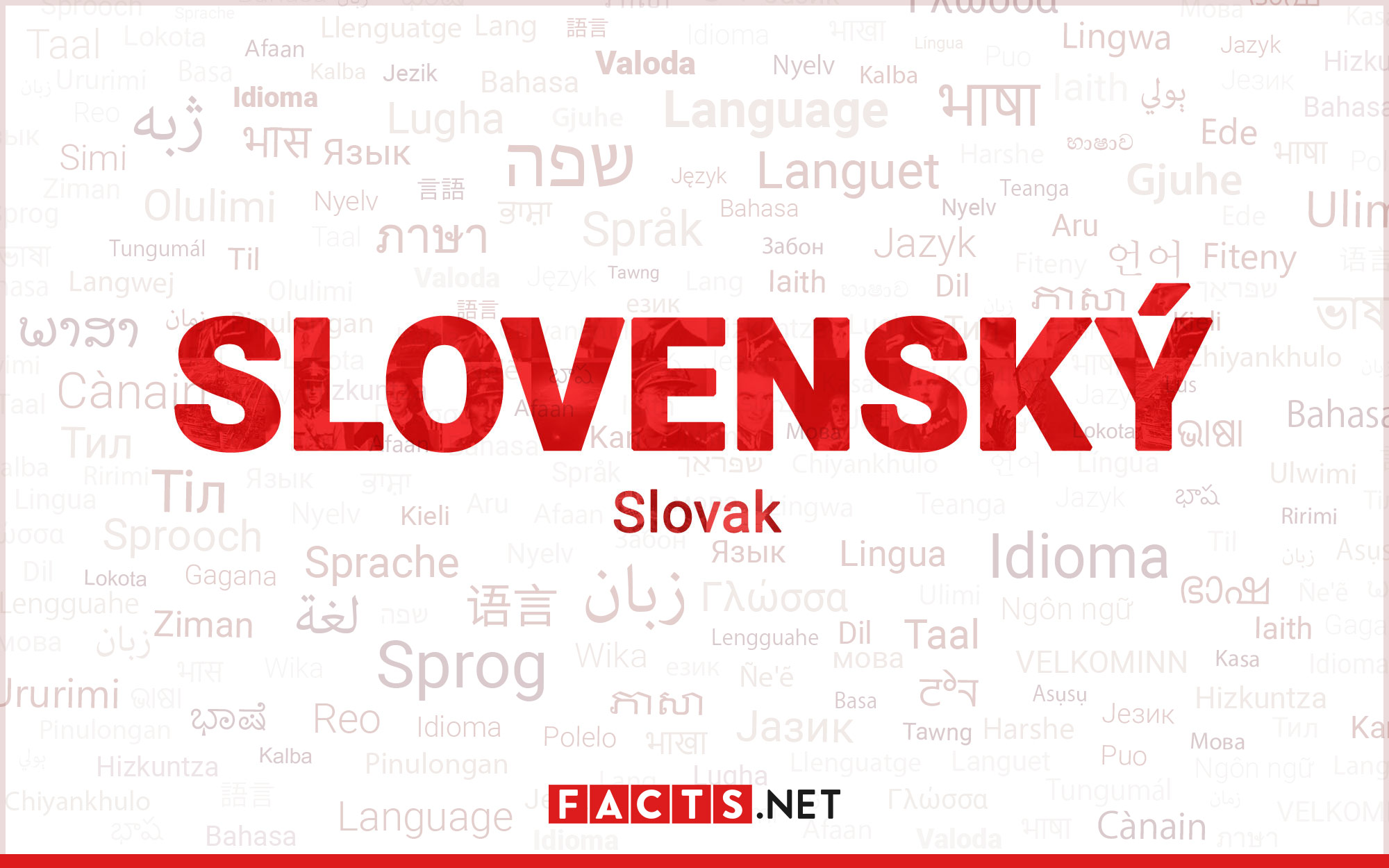
Slovak, the official language of Slovakia, is a fascinating and richly expressive language that is deeply rooted in the Slavic family. With a melodic and lyrical quality, Slovak has a unique charm that captivates both its speakers and those who venture to learn it.
In this article, we will uncover 13 astounding facts about Slovak that will shed light on this beautiful language’s history, structure, and cultural significance. From its origins as a distinct Slavic language to its intricate grammatical system, Slovak offers a fascinating insight into the linguistic diversity of Central Europe.
Whether you are a language enthusiast or simply curious about the intricacies of Slovak, prepare to be amazed by the depth and complexity of this remarkable language.
Key Takeaways:
- Slovak is an official language of Slovakia, with a rich literary tradition and a diverse vocabulary influenced by other languages.
- Learning Slovak can provide a gateway to understanding other Slavic languages and connect with Slovak communities around the world.
Slovak is an official language of Slovakia.
Slovak, one of the West Slavic languages, is the official language of Slovakia. It is spoken by approximately 5 million people worldwide.
Slovak shares similarities with other Slavic languages.
As a member of the Slavic language family, Slovak shares similarities with other Slavic languages such as Czech, Polish, and Russian. However, it also has its own unique characteristics.
Slovak uses the Latin alphabet.
Unlike some other Slavic languages that use variations of the Cyrillic alphabet, Slovak employs the Latin alphabet with diacritical marks. These marks, including accents and carons, indicate the pronunciation of certain letters.
The first written record of Slovak dates back to the 15th century.
The earliest known written record of Slovak can be traced back to the 15th century. The works of prominent Slovak writers and scholars have played a crucial role in preserving and developing the language throughout history.
Slovak has a rich vocabulary.
Slovak has a diverse vocabulary, with many loanwords from other languages, including Latin, German, Hungarian, and more. This linguistic richness adds depth and variety to the Slovak language.
Slovak has multiple dialects.
Like many other languages, Slovak exhibits regional variations and dialects. These dialects often differ in pronunciation, vocabulary, and grammar, reflecting the cultural diversity of different regions in Slovakia.
Slovak has a grammatical case system.
Slovak features a grammatical case system, similar to other Slavic languages. It includes seven cases: nominative, genitive, dative, accusative, locative, instrumental, and vocative. Each case serves a specific grammatical function within a sentence.
Slovak is a phonetic language.
Unlike English, Slovak is a phonetic language, which means that words are pronounced as they are spelled. Once you understand the pronunciation rules, reading and speaking the Slovak language becomes easier.
Slovak has a rich literary tradition.
Slovak literature has a long history, with renowned poets, novelists, and playwrights contributing to its cultural heritage. From the works of Martin Kuku?ín to contemporary authors like Peter Piš?anek, Slovak literature continues to evolve and inspire.
Slovak is an official language in the EU.
Since Slovakia is a member of the European Union, Slovak is recognized as one of the official languages within the EU institutions. This recognition highlights the importance and influence of the Slovak language on a broader international scale.
Slovak is a gateway to understanding other Slavic languages.
Learning Slovak can provide a solid foundation for learning other Slavic languages. The knowledge of Slovak makes it easier to grasp the grammar, vocabulary, and syntax of related languages like Czech, Polish, and Ukrainian.
Slovak is spoken by Slovak diaspora around the world.
Due to historical events and migration, there are Slovak communities and diaspora spread across various countries. These communities are a testament to the lasting influence and global reach of the Slovak language.
Slovak is a language of culture, heritage, and national identity.
The Slovak language is deeply intertwined with the culture, heritage, and national identity of Slovakia. It serves as a means of preserving and expressing the unique traditions, values, and stories of the Slovak people.
Conclusion
In conclusion, Slovak is a fascinating language with a rich history and unique characteristics. From being one of the official languages of the European Union to its Slavic roots, Slovak has a lot to offer to language enthusiasts. Its phonetic alphabet, grammatical cases, and distinct vocabulary set it apart from other languages. Whether you’re planning to visit Slovakia or simply interested in exploring a new language, learning Slovak can open up a world of opportunities.
FAQs
1. Is Slovak difficult to learn?
While learning any new language takes time and effort, Slovak can be considered moderately difficult. The grammatical cases and pronunciation can pose a challenge for beginners, but with dedication and practice, it is definitely possible to learn.
2. Are there any similarities between Slovak and other Slavic languages?
Yes, Slovak shares similarities with other Slavic languages, particularly Czech, Polish, and Ukrainian. These languages belong to the same language family and have common vocabulary and grammatical structures.
3. How widely is Slovak spoken?
Slovak is the official language of Slovakia and is spoken by the majority of the population. It is also recognized as a minority language in neighboring countries such as Hungary, Poland, and Ukraine.
4. Can I use Slovak to communicate in other Slavic countries?
While Slovak and other Slavic languages share certain similarities, their vocabulary and pronunciation can differ significantly. It is advisable to learn the specific language of the country you plan to visit, but having a basic understanding of Slovak can still be beneficial.
5. Are there any resources available for learning Slovak?
Yes, there are numerous resources available for learning Slovak, including textbooks, online courses, language exchange programs, and mobile apps. It is recommended to combine various resources to find the method that works best for you.
Immerse yourself in the fascinating world of Slavic languages by exploring Slovenian, a close relative of Slovak. Uncover the rich history and cultural significance of Bratislava Castle, an iconic symbol of Slovak heritage. Dive into the intriguing realm of Czech, another captivating Central European language.
Was this page helpful?
Our commitment to delivering trustworthy and engaging content is at the heart of what we do. Each fact on our site is contributed by real users like you, bringing a wealth of diverse insights and information. To ensure the highest standards of accuracy and reliability, our dedicated editors meticulously review each submission. This process guarantees that the facts we share are not only fascinating but also credible. Trust in our commitment to quality and authenticity as you explore and learn with us.


